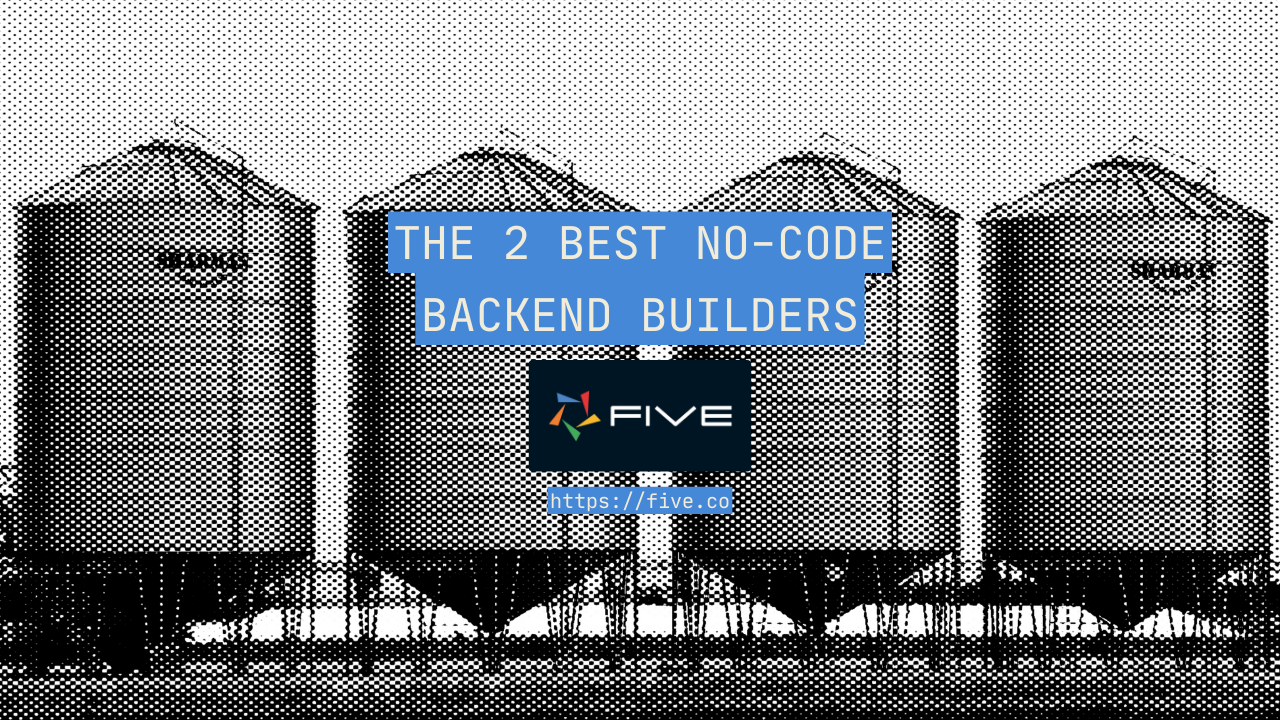The 2 Best No-Code Backend Builders
 Dominik Keller
Dominik Keller
No-code backends provide their users with an easy-to-setup and easy-to-maintain database for application development. Visual tools to create databases and tables, no-code backends are beginner-friendly implementations of popular database technologies, such as MySQL or PostgreSQL.
If you're entirely new to the world of databases, we recommend reading our article on Modern Database Management Explained or check out this list of the best books on MySQL.
What Are No-Code Backends?
A no-code backend, or Backend as a Service (Baas) gives developers access to all the tools required to create a scalable backend without having to write SQL, set up database servers, or worry about database backups.
To make this more concrete, let's understand what databases are. Databases' most fundamental building blocks are tables. Tables are where the content and data that you show to your end-users is stored.
In the past, creating a database required writing SQL, a popular programming language that enables programmers to communicate with a database. The tools used were database GUIs, which allow programmers to write and run SQL queries.
Today's no-code backends have abstracted away SQL behind easy-to-use point-and-click interfaces. Gone are the days where developers had to go through the tedious process of writing this:
CREATE TABLE table_name (
column1 datatype,
column2 datatype,
column3 datatype,
....
);
Nowadays, creating database tables, data types, relationships, and primary or foreign keys requires little more than a basic understanding of relational databases and how they store data in columns and rows.
On top of creating tables, there is a lot more that no-code backends take care of, such as creating and maintaining your database server, providing cloud storage, and taking care of backups. No-code backends give you everything you need to get a web-hosted database up and running.
So let's go ahead and explore three popular no-code backends and their capabilities and features.
Top 2 No-Code Backends
Five: A Rapid Development App Builder with a MySQL Database
Five is a rapid application development environment that integrates all steps of application development: backend, frontend, and deployment.
Five gives users an integrated MySQL database, which can be created visually, using its Table Wizard, a rapid and easy-to-use interface for creating database tables, assigning data types, and creating table relationships.
Five also automatically generates primary keys, a feature that is useful to ensure data integrity. It further lets developers import data from CSV and inspect their database scheme visually.
All of these features make Five a powerful database GUI. An added benefit is that Five uses MySQL as the underlying database and allows users to export their database as a database dump. This means that there is no lock-in as users can simply export their database and host it elsewhere.
Five is free to use: download the development environment and start building. Pick one of Five's hosting packages to deploy your application and its database to the cloud, starting from US$29.99 per application/month. Five's Basic plan comes with 3GB of storage included.
Sign Up For a Free Download
Try Five For Free
Xano: A No-Code Backend
Xano is a popular no-code backend that gives users a PostgreSQL database, which can be created and maintained visually. On top of its database creation capabilities, Xano also gives users an API that lets the database interact with other tools, such as front-end builders.
Here is where tools such as Five and Xano are different: Five gives users everything to build a full-fledged web app. Xano, on the other hand, is a purpose-built backend provider that only provides users with the database. This means that if you wish to build a web app, you will need to choose another tool to work on top of Xano, such as AppGyver or other no- and low-code front-end builders.

Xano has a free plan that is limited to 100,000 records of data. Its Launch plan is US$85 per month and comes with 3GB of SSD storage and 10GB of image and file storage.
Xano vs Five: Which One to Pick?
Xano and Five can both be used to create a web-hosted database that stores data online. Five uses MySQL and Xano PostgreSQL as the database. For 99% of all projects, either choice is fine: you cannot go wrong with MySQL or PostgreSQL.
The differences between Five and Xano are pricing (Five starts at US$29.99 and Xano at US$85 per month) and purpose: Five is a full-fledged application environment that is best used to rapidly build and deploy bespoke business applications. It auto-generates a web front end for your database backend.
Xano, on the other hand, is a dedicated no-code database. It has more comprehensive API documentation to make API endpoints, for example. And by choosing a front-end builder that connects to Xano, you can combine Xano with almost any front-end to create highly-customized interfaces on top of your database.
Subscribe to my newsletter
Read articles from Dominik Keller directly inside your inbox. Subscribe to the newsletter, and don't miss out.
Written by

Dominik Keller
Dominik Keller
Co-Founder of Five, a low-code startup from Brisbane, Australia.
